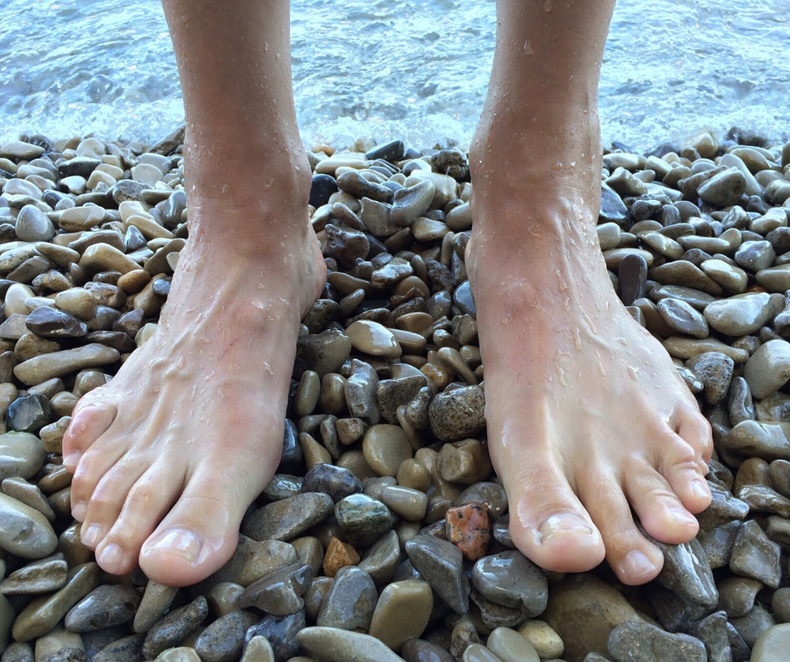Morton's toe is a common foot condition. It is most commonly characterized by the second toe being longer than the big toe. However, this is not the proper diagnosis for a morton's toe condition, as a second longer toe doesn't necessarily confirm this. Instead one has to look at the bone positioning of the metatarsal heads, which are the bones that make up the ball of the foot. In a true morton's toe condition the second and third metatarsal heads are positioned ahead of the big toe joint. Now let's look at some of the foot pain conditions that are associated with morton's toe.
Due to the second and third metatarsal heads sitting further ahead than the big toe joint, many of our clients present with metatarsalgia, commonly known as ball of foot pain. The pain may present itself under the second and third metatarsal head or in some cases under the big toe joint. The former is related to excessive pressure applied to the second and third metatarsal bones due to them being positioned further forward than the big toe joint, hence more force is being applied to these bones on toe off. The big toe joint on the other hand experiences increased loads due to increased arch collapse, related to forefoot instability. With the increase in arch collapse pain can present itself under the big toe joint, known as seasomoiditis, or the arch (plantar fasciitis). Both of these conditions are most prevalent among clients spending a good part of their day on their feet, be it for work or for play.
To relieve foot pain from morton's toe we have many tools at our disposal. Rocker soled shoes can help reduce forefoot pain by reducing pressure on the metatarsal bones on toe off. This makes walking and running fun again. If the foot is rolling in (pronating) excessively we stabilize the foot arches with orthotics and arch supports to prevent overstretching of the plantar fascia and reduce pressure on the big toe joint. Additionally footwear modifications, such as cutouts in a shoe's midsole, or metatarsal pad additions may be required to transfer the pressure away from the metatarsal bones into the rear of the foot.
Looking for help with your foot pain conditions? Book a complimentary appointment with one of our pedorthists to gain a better understanding of how our products and services may assist you in achieving better health through your feet.

